What Is Stone Masonry?
Important Point
The construction of stones bonded together with mortar is termed as stone masonry. Where the stones can be found in abundance in nature, on cutting and dressing to the proper shape, they provide an economical material for the construction of various building components such as walls, columns, tootings, arches, beams, etc..
Stone-masonry being stronger, durable, and weather-resistant, when compared with brick masonry, is used in the construction of piers, docks, dams lighthouse, and other marine structures.
Classification of Stone Work
Based on the arrangement of stones in the construction and the degree of refinement in the surface finish, the stone masonry can be classified broadly into the following two categories:
- Rubble Masonry
- Coursed Rubble
- Uncoursed Rubble
- Random Rubble
- Dry Rubble
- Polygonal Rubble
- Flint Rubble
- Ashlar Masonry
- Ashlar Fine
- Ashlar rough tooled
- Ashlar rock or quarry faced
- Ashlar Chamfered
- Ashlar block-in course
Also, read: What Is Concrete | 31 Different Types of Concrete
1. Rubble Masonry
In this type of construction, stones of irregular size are used. The stones as obtained from the quarry are taken to be used in the same form or are broken and shaped into suitable sizes by means of a hammer as the work proceeds. The strength of the rubble masonry mainly depends on:
- The quality of the mortar.
- The use of long stones at a frequent interval for proper bonding.
- The proper filing of the mortar between the spaces of stones.
1.1. Coursed Rubble Masonry
In this type of rubble masonry, the heights of stones vary from 50 mm to 20 cm. The stones are stored before the work commences.
The masonry work is then carried out in courses such that the stones in a particular course are of equal heights.
This type of masonry is used for the construction of public buildings and residential buildings. The coursed rubble masonry is further divided into three categories.
1.2. Coursed Rubble Masonry I Sort
In this type, stones of the same height are used, and the courses are of the same height. The face stones are dressed by means of a hammer, and the brushings do not project by more than 40 mm. The thickness of the mortar joint does not exceed 10 mm
Coursed rubble masonry I Sort
1.3. Coursed Rubble Masonry H Sort
The stones to be used are of different heights. The courses need not be of equal heights. Only two stones are to be used to make up the height of one course. The thickness of the mortar joint is 12 mm
Coursed rubble masonry II Sort
1.4. Coursed Random Rubble III Sort:
The stones to be used arc of different heights, the minimum being 50 mm. The counts need not be of equal heights. Only three stones are to be used to make up the height of one course. The thickness of the mortar joint is 16 mm.
Coursed rubble masonry III Sort
1.5. Uncoursed Rubble Masonry
In this type of rubble masonry, the stones arc not dressed. However, they arc used as they arc available from the quarry, except by knocking out some corners. The courses arc not maintained regularly.
The larger stones are laid first, and the spaces between them are then filled by means of spalls. The wall is brought to a level every 30-50 cm.
This type of rubble masonry being cheaper is used for the construction of compound walls, garages, labor quarters, etc.
Uncoursed Rubble Masonry
1.6. Random Rubble Masonry
In this type of rubble masonry, stones of irregular sizes and shapes are used. The stones are arranged to have a good appearance.
It is to be noted that more skill is required to make the masonry structurally stable. If the face stones are chisel dressed and the thickness of mortar joints does not exceed 6 mm, it is known as random rubble masonry, I sort.
If the face stones are hammer dressed and the thickness of mortar joints does not exceed 12 mm, it is known as random rubble masonry II sort. This type of masonry is used for the construction of residential buildings.
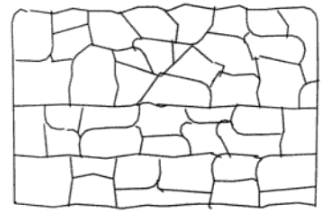
1.7. Dry Rubble Masonry
This is just similar in construction to the coursed rubble masonry III sorts except that no mortar is used in the joints. This type of construction is the cheapest, but it requires more skill in construction.
It is extensively used for compound walls pitching on bridge approaches, retaining walls, etc. In order to prevent the displacement of stones and to make the work more stable, the two courses at the top and about 50 cm length at the ends are sometimes built in mortar.
1.8. Polygonal Rubble Masonry
In this type of masonry, the stones are hammer dressed and the stones selected for face work are dressed in an irregular polygonal shape.
Thus, the face joints are seen running in an irregular shape in all directions. It is to be noted that more skill is required in this type of construction.
1.9. Flint Rubble Masonry
In this type of masonry, the stones are used as flints that are irregularly shaped nodules of silica. The width and thickness vary from 80 mm to 15 cm and the and the length varies from 15 to 30 cm.
Also, read: What Is Standard Proctor Test & his Detail | Procedure Standard Proctor Test
2. Ashlar Masonry
This is costlier, high grade and superior quality masonry. This is built from accurately dressed stones with uniform and very fine joints of about 3 mm thickness.
By arranging the stone blocks in various patterns, different types of appearances can be obtained. The backing of ashlar masonry walls may be built of ashlar or rubble masonry.
2.1. Ashlar Fine Masonry
At all beds, joints, and faces stones should be dressed perfectly so that they conform to the desired pattern. The size of the stones to be laid in regular courses should not be less than 300 mm in height.
The width of the stones should not be less than the height of the course, In addition, the length of the stones should be more than two times the height of the course.
Generally, face stones arc laid as headers and stretchers alternatively. The header comes under the middle portion of the stretchers.
In order to break the continuous vertical joints, the stones in the adjacent layers should have a lap of more than half of the height of the course.
All the joints, either horizontal or vertical, should be made of fine mortar with a maximum thickness of 3 mm. The broken edges of the stones should not be visible at the joints.
Ashlar Fine Masonry
2.2. Ashlar Rough Tooled Masonry
The exposed faces of this type of masonry should be given a fine dressed chisel drafting of about 25 mm width. In between the drafts, portions should be roughly tooled. The joint thickness should be 6 mm.
2.3. Ashlar Rock or Quarry Faced Masonry
In this case, the exposed faces of the facing stones between the chisel draftings all around are left undressed. However, the projections of sizes more than 8 cm arc broken.
All other specifications regarding the sizes of the stones and the bond are kept similar to that of ashlar rough tooled masonry.
2.4. Ashlar Chamfered Masonry
In this type of ashlar masonry, the strip is provided as above. However, it is chamfered or beveled at an angle of 45 degrees by means of a chisel for a depth of about 25 mm.
Another strip 12 mm wide is then provided on the remaining exposed face of the stone and the surface inside this strip is left in the same form as received from the quarry.
The large bushings projecting out to more than 80 mm is removed by a hammer. A neat appearance of the grooved joints is obtained with the help of this type of construction.
2.5. Ashlar block-in course Masonry
This type of masonry occupies an intermediate position between the rubble masonry and ashlar masonry. The faces of the stones are generally hammer dressed and the thickness of mortar joints does not exceed 6 mm.
The depth of courses varies from 20 to 30 cm. This type of construction is used for heavy engineering works.
Also Read: Stone Classification
Stone Masonry
Stone masonry is a type of building masonry construction that uses stones and mortar. This construction technique is used for building foundations, floors, retaining walls, arches, walls and columns. These natural rocks are cut and dressed into proper shape in order to use it in masonry construction.
Coursed Rubble Masonry
Coursed rubble masonry is a construction technique used in building walls, typically in stone or brick construction. It is characterized by the use of stones or bricks that are roughly dressed or shaped and laid in horizontal courses or layers.
What Is Stone Masonry?
Stonemasonry or stonecraft is the creation of buildings, structures, and sculpture using stone as the primary material. Stonemasonry is the craft of shaping and arranging stones, often together with mortar, to form structures.
Types of Stone Masonry
The two main classifications of Stone Masonry are:
- Rubble Masonry.
- Ashlar Masonry.
Stone Masonry Types
- Rubble Masonry: Rubble masonry is the simplest and most basic type of stone masonry. It involves using rough, irregularly shaped stones of various sizes and laying them with mortar or without mortar. Rubble masonry can be coursed (with roughly equal-sized stones) or random (with stones of different sizes and shapes).
- Ashlar Masonry: Ashlar masonry is a more refined and uniform type of stone masonry. It uses precisely cut and dressed stones with flat faces and straight edges.
Crs Masonry
Coursed Rubble Masonry is the form of masonry which is commonly adopted in the construction of residential buildings public buildings, piers and abutments for ordinary bridges. Considering the dressing and finishing of the stones, it is further sub-divided into first class, second class and third class masonry.
Flint Rubble Masonry
Flint rubble masonry is a specific type of rubble masonry that utilizes flint stones as the primary building material. Flint is a hard, sedimentary rock composed mainly of silica. It is commonly found in regions where it naturally occurs, such as parts of Europe and North America.
Ashlar Block in Course Masonry
Ashlar masonry is a type of stone construction where all stones are dressed or cut to a uniform shape, size, and surface appearance. They are then laid in horizontal courses, or layers, with very little of a supporting substance called mortar between them.
Coursed Rubble Stone Masonry
Coursed rubble stone masonry is made with broken stones of widely different sizes and qualities that are laid in level courses. One of the most common forms of masonry construction, coursed rubble stones are typically hammer dressed to be shaped into more controlled and equal sizes.
Classification of Stone Masonry
The two main classifications of Stone Masonry are: Rubble Masonry. Ashlar Masonry.
Masonry Stone
Stone masonry is a type of building masonry construction that uses stones and mortar. This construction technique is used for building foundations, floors, retaining walls, arches, walls and columns. The stones used for masonry construction are natural rocks.
Coursed Stone Masonry
Coursed stone masonry is a type of stone construction where the stones are laid in horizontal courses or layers with consistent heights and parallel bed and joint lines. It is a more structured and orderly approach compared to random stone masonry.
Square Rubble Masonry Uncoursed
Un coursed square rubble masonry:
The squared rubble in masonry which hammer dressed stones are laid without making courses is called un coursed square rubble masonry. It consists of stones which are squared on all joints and beds by hammer dressing. All the stones to be laid are of different sizes.
Bushing in Stone Masonry
Bushing tools are ideal for leveling concrete surfaces and removing excess concrete during finishing work. Additional, bushing tools can be used to roughen a smooth concrete to prepare the surface for additional concrete or a coating.
Quarry Faced Ashlar Masonry
Ashlar is a type of masonry which is finely cut and/or worked, and is characterised by its smooth, even faces and square edges. It can also be used to refer to an individual stone that has been finely cut and worked until squared.
Like this post? Share it with your friends!
Suggested Read –
- Stone Joints
- What Is Quarry Stone
- What Is Dressed Stone
- Stretcher Course Brick
- Lab Test on Aggregates at Site
- Top 10 Tiles Companies in India 2021
- Top 10 Best Cement Companies In India 2021
- What Is Linear Measurement Surveying | Type of Linear Measurement Surveying
- Bar Bending Schedule Formulas As Per IS:2502-1963 | Unit Weight of Steel Bars
- Estimation for Building Works | Centre Line Method | Long and Short Wall or Out and in to in a method
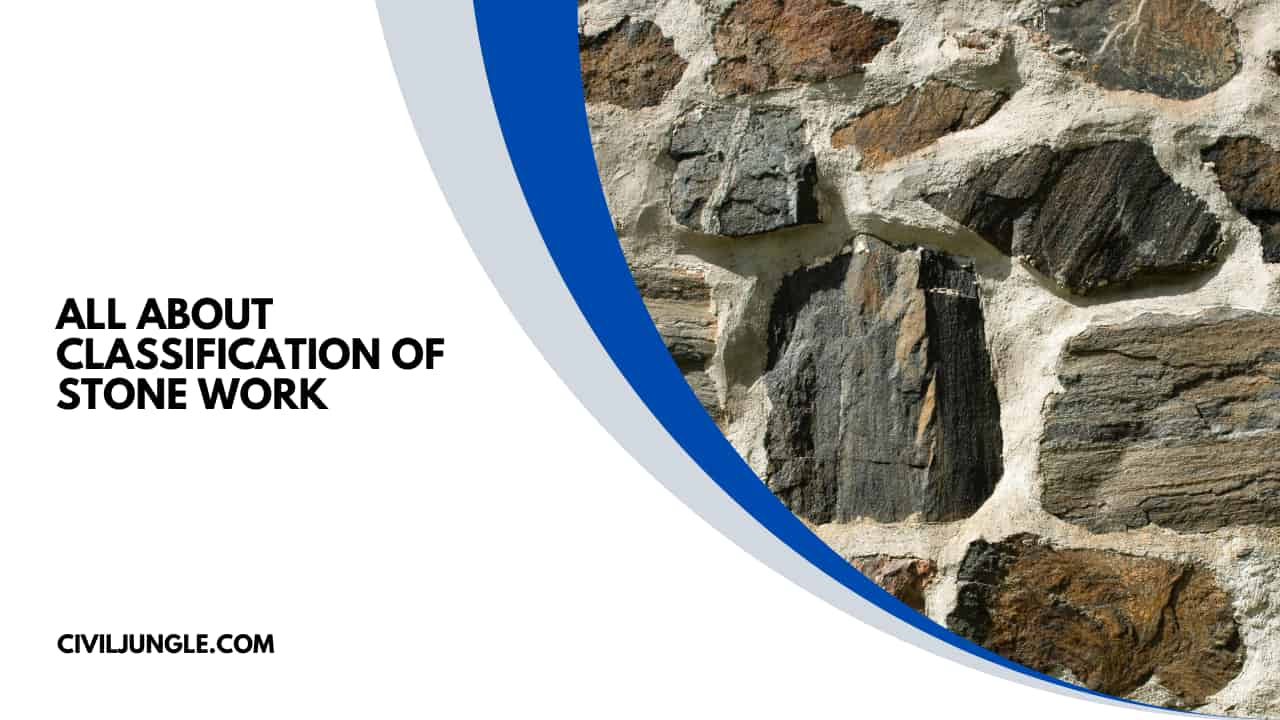

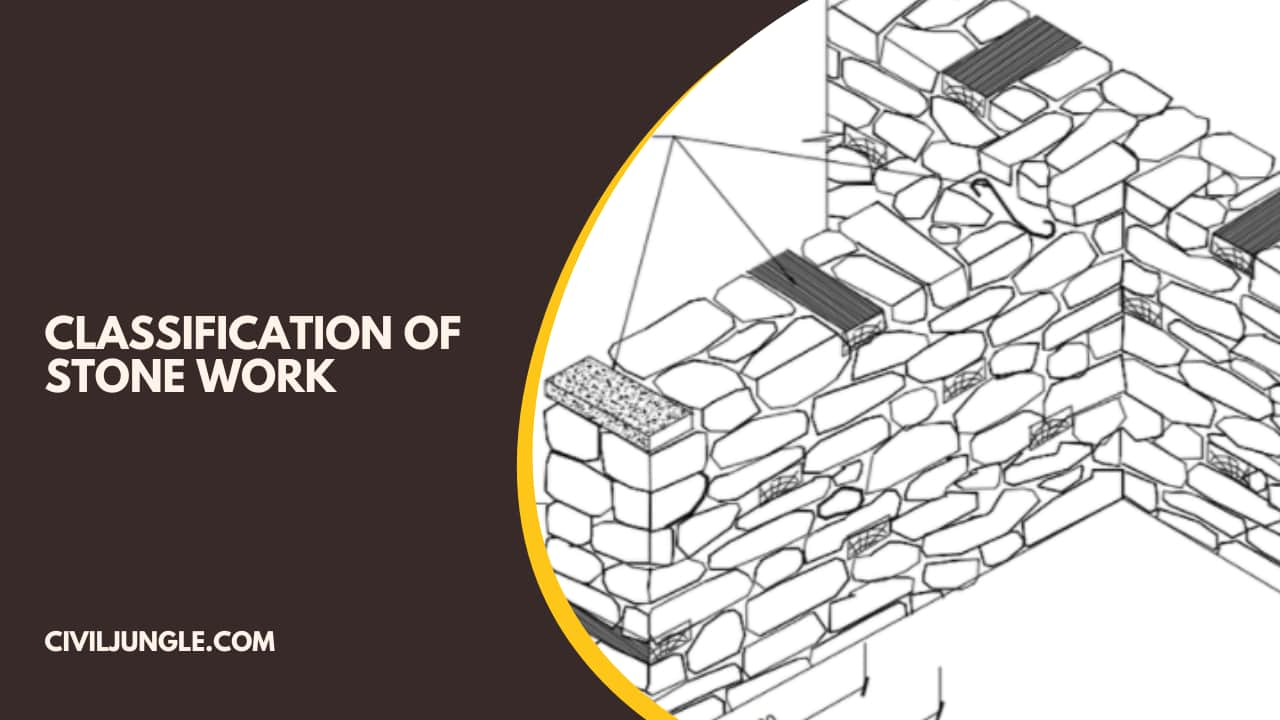
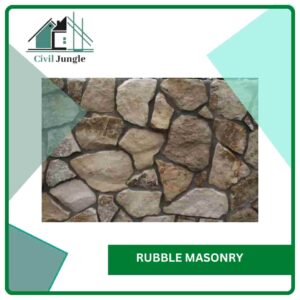
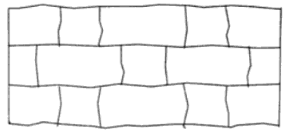
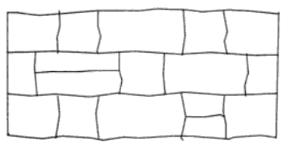
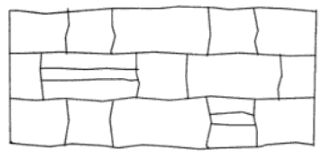

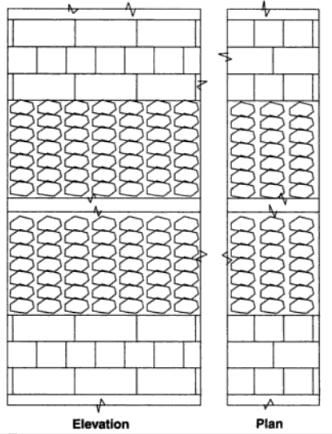
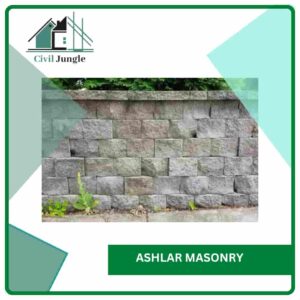
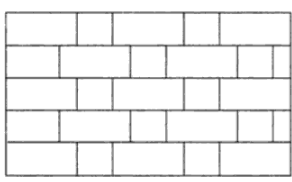

The most expensive type of stone masonry is the Ashlar Masonry. Despite that, it’s also the most popular choice for some of our clients. What yours?
Good details on all of the categories of masonry. I didn’t know that there were separate terms for Uncoursed Rubble Masonry and Random Rubble Masonry.